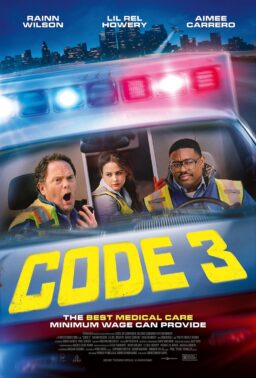It’s hard to believe there will be a more divisive game of 2023 than “Hogwarts Legacy,” and it’s got little to do with the game itself. The game has become a talking point for trans rights, allyship, and separating art from a singular creator. It has produced some riveting conversations and brilliant essays, from people who haven’t even played a second of it. It raises a bigger question for the legacy of Harry Potter and J.K. Rowling in that the former will go on long after the latter is gone, but the creator of the magical wizard has used her clout and prestige from it to do harm to the trans community. It has led some outlets to question if they should even review “Hogwarts Legacy.” After much consideration, I chose to move forward in the same way we would review a new “Harry Potter” movie. The franchise will continue, and it feels like putting your head in the critical sand to ignore it entirely. But I want everyone considering a purchase of the game to be informed too about more than just the game itself. This is an excellent piece that gets at all of the many issues surrounding Rowling and this game, both pro and con.
“Hogwarts Legacy” unfolds a century before the action of the books and movies, so there won’t be any Hagrid or Hermione cameos, although fans will be able to pick out references to the history cited in the books and a familiar name or two (one of your professors is a Weasley, for example). You play a student that you create at the beginning of the game with a robust amount of detail. Pick your name, gender, appearance, and even the house of Hogwarts. Your character will be voiced by Sebastian Croft or Amelia Gething and start their journey as a fifth-year Hogwarts student.
The game opens in London as you travel with your mentor, Professor Fig, to Hogwarts via flying coach. The journey is interrupted by a dragon that destroys the coach, instantly thrusting you into an adventure that involves the history of magic in this region and your very special role as a chosen savior. Yes, once again, a Potter-world story tells the arc of a hero who can see and do things that others cannot, a sort of human key to unlocking the past and saving the future.

While you investigate what your ability to see and use ancient magic means, you start by attending classes and making friends at Hogwarts. The setting of “Hogwarts Legacy” is brilliantly conceived and gorgeously rendered. There’s a real sense of life at Hogwarts as you explore the halls and find new secrets behind every door. You will also travel out to the town of Hogsmeade and to many enemy-populated regions around it, but you will keep returning to Hogwarts, which even changes through the seasons as the game progresses. It’s one of the most alive settings in a game in a long time.
Between classes like Potions and Beasts that give you a consistently upgrading sense of power and new toys to play with after nearly every quest, you and Fig discover a massive chamber underneath Hogwarts, where you literally communicate with the Keepers, ancient staff members who guarded the secrets of dangerous magic that evil forces are now trying to unleash. You will make friends through side quests that can accompany you on main ones, and the whole experience runs well over 30 hours, and that’s if you hurry. It’s reportedly closer to 70 if you take your time, explore, and unlock every secret around in this enormous gaming world.
“Hogwarts Legacy” may not be specifically related to Harry Potter, but it’s undeniably designed to appeal to its loyal fan base, giving them so many things that they’ve probably dreamed about since they read the first book. Want to ride a broom? How about a Hippogriff? Want to learn spells? Want to explore the Great Hall or buy a wand at Ollivander’s? How about traveling under Gringott’s? The game never feels like it’s resorting to just fan service, but it has just the right amount of wish fulfillment for people who grew up just wanting to revisit this fantasy world.

The gameplay is remarkably refined, although could be a bit complicated for kids who want to play through the whole game. You can have four spells equipped at any time, and they are shaded in different colors both to delineate their strategic purpose and so they can be used to break enemy shields—if an enemy has a purple shield, it needs a purple spell, for example. You will ultimately learn almost 20 spells, which means you have to pick your favorites or get used to cycling through them in the heat of combat—you can unlock a “talent” that makes this cycling easier later in the game. As if that’s not enough to track, you also have a bag of potions with different effects and even combat magic toys like enemy-eating plants that you can throw at them. It’s a gameplay system that seems overwhelming but only offers variety and customization. You don’t need to use all the toys. There were numerous spells I barely used, and I didn’t get into crafting potions that much at all, but someone else could have a very different tactical approach. However you choose to tackle enemies, it’s a remarkably fluid, entertaining combat system that adds just the right amount of strategy and action to enemy encounters.
The game is also filled with a good amount of puzzle-solving as your wizard explores the world around Hogwarts. Whether it’s math puzzles on doors or a series of “Merlin Trials” that expand your inventory, “Hogwarts Legacy” is a game that doesn’t rely as heavily on non-stop combat as most modern games. It also features multiple options in conversations, allowing players to converse with hundreds of NPCs, some of which can become allies in combat. It creates a world that’s very alive, and it’s important to note that it’s diverse as well, something this franchise has failed to be in the past. There’s even a notable trans supporting character that gives side quests and impacts the plot, which feels like progress (although her name has been criticized).

At times, there’s almost too much to do in “Hogwarts Legacy.” (I haven’t even mentioned the non-stop loot hauling that gives you roughly 100 versions of the same hat sometimes.) It’s the difference between world-building and clutter. After dozens of hours, I’ve completed probably two-thirds of the side quests and all of the main quests, and there are major chunks of the map that I never even went to. One could say that this makes for a game that’s rich and entertaining even outside of its main story. One could also say that it succumbs to that common open-world game problem of merely dotting a landscape with chores and distractions. I tend to the former house, but completists who want to get every trophy in this game may start to feel like it’s a repetitive chore.
The story of “Hogwarts Legacy” is rich enough, but the game is mostly about transporting fans of Harry Potter to a world they’ve wanted to visit for a generation and giving them the tools to explore it. That world has been tarnished for some fans in a way I completely understand, but there’s also a sense that some of them are trying to reclaim it. It’s the fans that make Harry Potter what it is, not a singular benefactor. Whether or not those fans can find that magic again in this game or any future Potter products is a legacy that’s still being written.
The publisher provided a review copy of this game.












